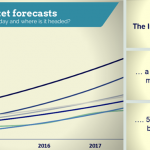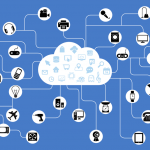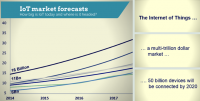Signed, sealed, delivered: IoT boosts global trade finance
Signed, sealed, delivered: IoT boosts global trade finance1

New Internet of Things (IoT) applications are having a significant impact on the modernization of global trade and supply chain financing.
As discussed by the Global Trade Review, IoT is increasingly being integrated into the global trade of goods and related financing.
These innovations are emerging against the backdrop of shipping firms increasingly integrating IoT technology into their logistics systems.
For example, IoT sensors are generating tracking data for physical status of goods or commodities that includes information on location, temperature, humidity and lighting exposure. This data is being used to assign a value to the product at any given time, which opens up new dimensions in trade financing.
“IoT in the form of sensors has an important role to play in realising the potential of smart contracts in trade and supply chain finance,” says Skuchain technology VP Ranga Krishnan.
His firm is working with two banks to develop sensors that track the location of goods. The location data in turn lets financial institutions decide whether to release transaction funds.
As well, such data on commodities and goods has obvious value to the insurance industry. Insurers are increasingly using IoT-generated data to better track insured goods and enable real-time claim payments.
And not only are insurers using this data, but banks active in commodity financing are relying on IoT capabilities to improve efficiency.
“The commodities shipped in containers change value according to the conditions of the containers and the insurability of those [goods],” said Stephen Atallah, trade finance advisor with R3 CEV which is involved with usage of blockchain in financial systems. “Exactly where they are in the lifecycle of the transaction is very [valuable] information for commodity finance banks.”
Using IoT to verify goods’ quality in trade
‘Pre-shipment financers are also using IoT to verify the state of warehoused goods used as collateral before lending money.
“A lender can be much more confident in the collateral of the pre-shipment finance, thereby creating greater liquidity and working capital opportunities for the buyer and the seller,” Atallah said.
And IoT is also having an impact on the implementation of smart contracts to improve these transactions. Smart contracts are essentially computer-based contracts that can automatically execute once certain conditions are satisfied.
“Those conditions could be certain documents being received, approvals being done, or it could be a message from a sensor saying that something has happened,” Krishnan said.
“That’s how sensors fit into smart contracts, they are one trigger that can cause a smart contract to implement its actions.”
The post Signed, sealed, delivered: IoT boosts global trade finance appeared first on ReadWrite.
(27)














